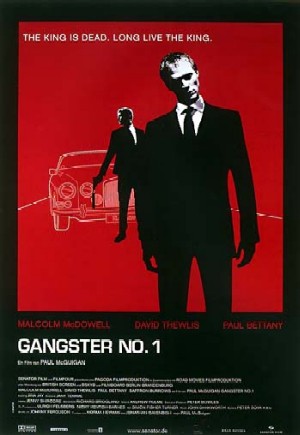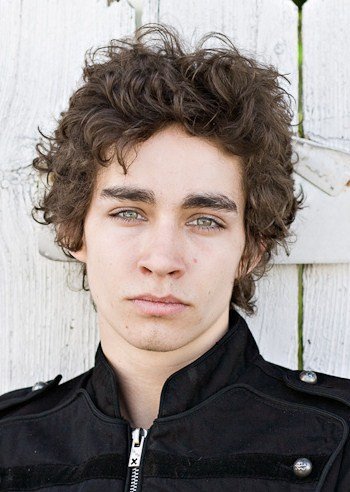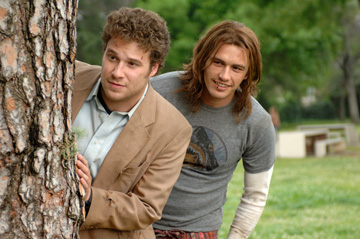Other then camera and editing techniques, I think the biggest thing I have learnt is the importance of roles among the group. Certain aspects can be (and sometimes need to be) shared. For example filming the introduction needed to be a group effort, we were all in scenes at one point so we all needed to lend a hand filming at some point. I think another area team work is vital was the development of our final piece, after we filmed our preliminary. If one person had decided everything, people might not like it or agree and so feel less enthusiastic to work. On the other hand, I found editing it at the end on my own the best way to deal with it. I think if we had more then one person doing it, it would be crowded and maybe full of too many ideas.
Another important thing I have learnt is to remember the film and story line in its entirety, like an artist who would step back every now and then too look at the whole picture. I think to make a good introduction you need to remember it is part of an entire film, even if the rest of it will never be made.
Question 6 - What have you learnt about technologies from the process of constructing this product?
While making my intro I have learned a lot more about the technology used in media production. First was our camera which was a DV. This simply means it can be played digitally. Using this, we learned about how to add effects on the camera its self and the use of zooming in and out while filming. One of the things I was most shocked at was how a simple tripod can be so useful. Not only does it help keep the camera steady, it also provides smooth panning shots from a range of different heights. It can even be tilted to look at awkward angels that may of been hard to do with the same precision if it just been hand held.
The part I enjoyed the most was the editing and I learnt huge amounts of new infomation just using it over a few weeks. We used Adobe Premier Pro which was very useful. Just by experimenting I found out how to add transitions, titles, edits on the clip itself and backing music/sound effects. I am now confident I have quiet a good understanding of how the editing process works, at least at an amateur level.
Finally I learnt a lot about how to use technologies in my house, such as lights, to our advantage. We found the lights in my kitchen were too bright, even when using a dimmer bulb. To over come this we put a cone of paper around a low watt bulb to give the opening half a very dark, yet still visible look.
Question 5 - How did you attract/address your audience?
The ways in which we tried to attract our audience was mainly through the use of lighting, camera angles and sound. We combined these three crucial elements in a way which made our movie seem very entertaining. The lighting is very dark for the first half, giving an aire of mystery and the unusual way the camera is dragged through the door way, as if you are actually on the ground. These are both quiet powerful camera techniques. The choice of songs, as I have said before, was vital. We chose a song that would appeal to younger people such as ourselves.
Equally as important was the cast. Because we used quiet a lot of well known British actors from shows which are popular with young people today, they may already have a fan base and so be more intrigued to go and watch our product.
Question 4 - Who would be the audience for your media product?
Our target audience is old teenagers to young adults (18-22), probably more males then females. Movies about robberies and murders usually appeal more to men then females, but we haven't intentionally gone out of our way to make it more masculine. However, women may be more attracted when they discover that the leader of the group is female. This was intentional as we thought this swap in what is seen as typical roles for men and women was old fashioned, and we wanted something fresh and modern. It will also be for people who like quiet dry and dark comedies such as Little Miss Sunshine.
Question 3 - What kind of media institution might distribute your media product and why?
Revolver Entertainment has distributed quiet a lot of British made movies, such as Kidulthood, Shank and other relatively similar productions. It also distritbutes slightly more risky movies such as Banksy's Exit through the Gift Shop. I like that they really have a feel for good and cutting edge British films and could really help us. The fact it also has ties in America means our product could be more globally available.
Question 2 - How does your media product represent particular social groups
My film is mostly about young adult/teenagers (18-20) and so in one of the two scenes they are in, it involves some violence and quiet a lot of very strong language (considering there is only a few lines in the opening). We did this so that the viewer thinks straight away that these are probably quiet similar to other delinquent teens that they have seen in previous movies. Although the characters have much more depth then just being stereotypical hooligans, we wanted to make it clear that despite their differences in appearance and character, they are all a little bit bad on the inside.
The cast I chose to play them was also very carefully thought out. All the people are chose to play these characters have previously played rolls that depicted them as being a little 'rough around the edges' and so as soon as the audience see's these actors, they will kind of expect what to see and how their characters in my movie are going to be portrayed.
The character played by Grace Brown is supposed to depict a queit upper class, well off buissness woman. We tried to show this mainly through the use of mise-en-scene. Her costume was the one we spent most the time on because she didn't have very many lines and we wanted to get across her character as quickly as possible. The choice of wearing high heels, I think, worked perfectly. It completely summarises up what her role is about, especially when she steps on the end of her cigarette. Also, by makeing her the boss of the boys we have kind of flipped the way in which females are normally depicted. She is the one calling the shots, and to fit this we needed an actress that would do this right.
Once again the person chose to play her was a hard choice. After seeing the movie Rock n Rolla and seeing how Thandie Newton portrayed herself as being quiet a stuck up, but sexy and powerful female roll we knew straight away she would fit in seamlessly. She is quiet old, especially to the rest of the cast, and this is also important. If the actress we chose was too young, I don't think they would be able to pull it off correctly. The only young actress I think might be able to do this would be Juno's Ellen Page. However, she might seem a bit too friendly, and not boss like with the boys.
The only other character is the burglar, but he is hardly in it so doesn't really have much effect on how any certain type of social group is represented. This was done intentionally so it remained a mystery as to who he is until right at the end when you find out the rest of the story.
Evaluation Question 1 - In what ways does your media product use, develop or challenge forms and conventions of real media products?
The opening scene to a movie can be vital. Some people judge a movie on the first two-three minutes so it is very important that it is captivating and interesting, leaving the viewer wondering what is going to happen next but without giving away too much of the storyline.
My movie has used these in the way a real media production would to create a professional looking opening scene. We built suspense by having the burglar slowly creep throw the house and not using any background music. Then, we leave the viewer with a question. Who is the burglar and why are the boys so worried? A way in which we may of challenged these conventions is by using the sped up travelling sequence. In my experience of movies this is used sometimes, but hardly ever in the first few minutes.It gives us time to clearly show who is starring in the movie, and the movies name via titles (another convention we have used). This scene was also made to play double speed to give the intro an energetic and jolty feel, getting the viewer excited for what is coming next.
The use of other quiet standard techniques were used, such as match-on-action when the girl is getting out of her car and ringing the door bell. We also tried to include some graphic matches. When the scene filmed from the floor is facing the light, we tried to fade that in with the lights on the street to make it flow smoothly and make the viewer less aware that it has actually be edited.
Another way we have tried to challenge the normal conventions of media is in the choice of music. We wanted to use something that really fitted what our movie was going to be about, and Poppa Wheelies Hood Mode was the perfect choice. Movies that are (loosely) in the same genre as ours usually use much older music, such as the Clash, Iron Maiden, Dead Kennedys etc. We wanted ours to feel more modern and appealing to a slightly younger audience.






























